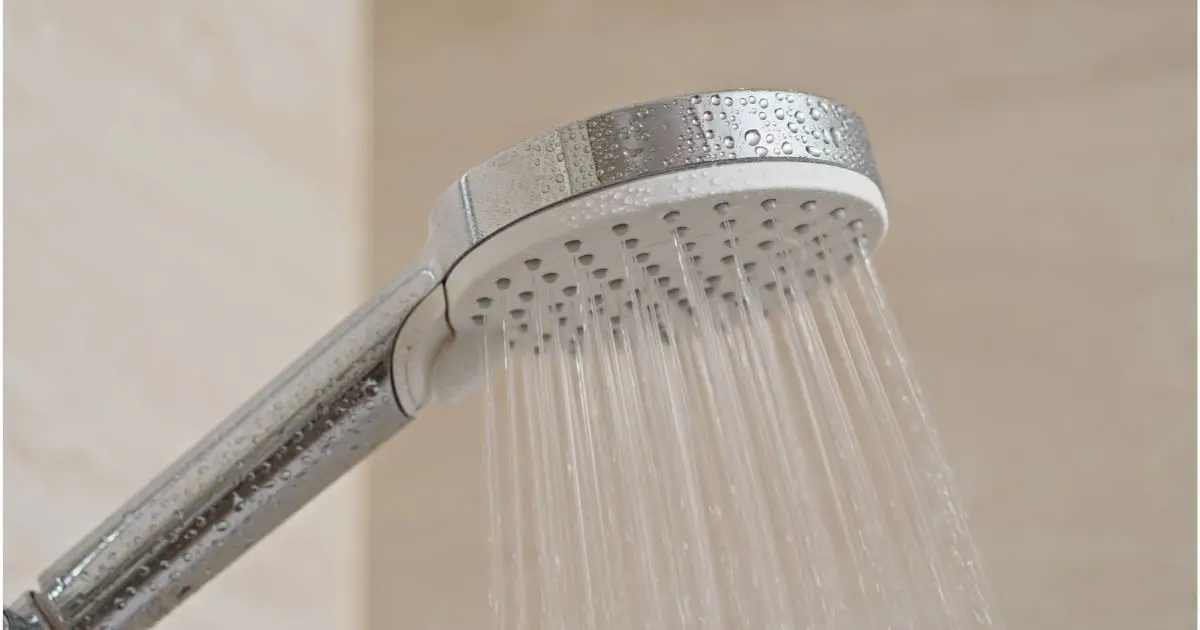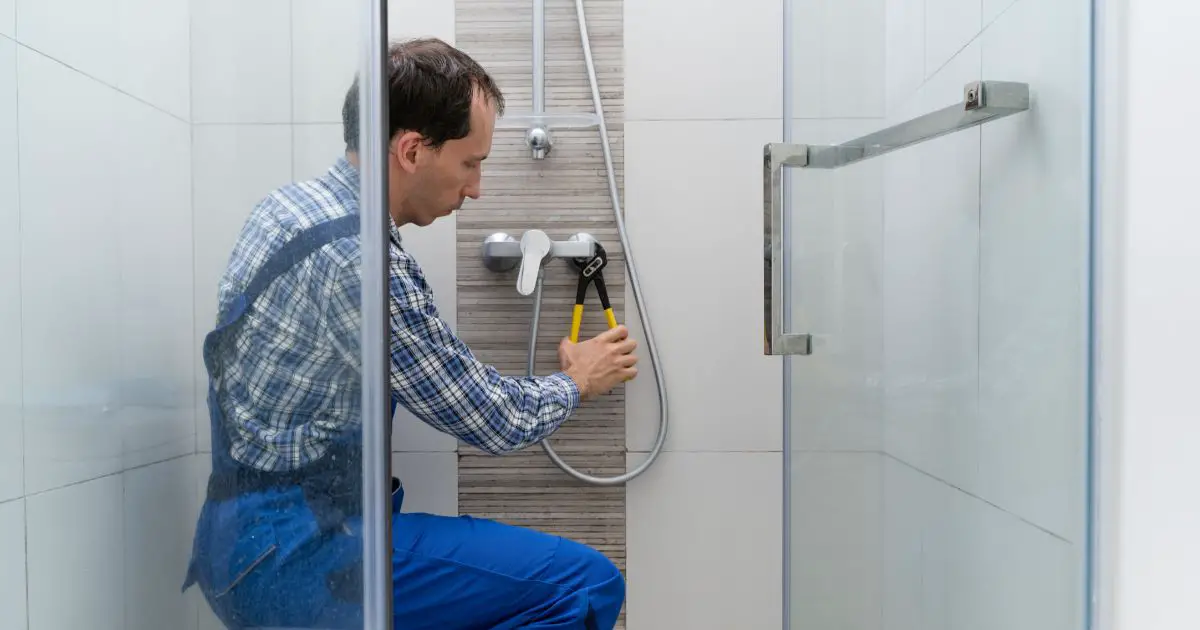Sometimes a hot shower is the only thing you need at the end of a long day at work or school. But when your hot water is not working in the shower, it can be an unpleasant surprise that ruins your plans for relaxation.
If you find yourself facing the issue of hot water not working in the shower, don’t worry — we have solutions for you to get your hot water flowing again. Learning to fix hot water that’s not working in your shower doesn’t have to be an overwhelming task.
By understanding common causes and troubleshooting problems, you’ll be able to get warm water running again quickly and easily.
Common Causes of Hot Water Not Working in the Shower

Let’s begin by discussing common reasons for your hot water not working in the shower. One of these reasons may be your issue, and you can then apply the corresponding steps to get the hot water running again.
Spoilt Anti-Scald Device
The anti-scald device, also known as a hot limit stop, is a common safety component installed in many shower systems. The purpose of this anti-scald device is to stop the facet handle from going too far toward the boiling point. That help put a limit to how far the facet handle can go in order to avoid the water getting too hot and to prevent scalding by mixing.
Therefore, when the anti-scald device is damaged or malfunctioning, it will automatically release boiling water that can harm the skin or very cold water capable of giving you a chill.
Here are some of the causes of a spoilt anti-scald device:
Clogged Supply Lines
One of the possible causes of the anti-scald device malfunctioning is the clogging of the water pipes that supply hot and cold water to your shower system.
Over time, these pipes may become blocked due to sediment buildup, rust, or other debris that can reduce the flow of water. The flow of water then may become so slow that it affects the performance of the anti-scald device.
Incorrect Calibration
In some cases, the anti-scald device may be incorrectly calibrated. If the temperature is set too high or too low, the resulting water temperature will not be comfortable for showering and can lead to scalding accidents.
Wrong Anti-scald Device Installation
The third probable cause of a malfunctioning anti-scald device is incorrect installation. A poor installation job can cause the anti-scald device to not work correctly, which may prevent it from regulating water temperature properly.
Malfunctioning Water Heater
A water heater is a crucial component in any hot water system. This is where the hot water is stored and heated up before coming through the shower system. When you have a malfunctioning or damaged water heater, it can result in hot water not working in the shower.
Common issues with water heaters include:
- Broken heating element
- Blown fuse
- Timer issues
- Sediment accumulation
- Faulty thermostat
- Dip tube issues
These problems can lead to a reduction in hot water pressure, low or inconsistent water temperature, or no hot water at all.
Worn-out Shower Mixing Valve
Another likely problem that can lead to hot water not working in the shower is a worn-out shower mixing valve.
A mixing valve in a water heater works by blending hot water from the heater with cold water from the incoming water supply to achieve a specific set temperature for the domestic hot water being delivered to faucets, showers, and other fixtures.
The valve typically contains a temperature sensor that measures the temperature of the hot water and a control mechanism that adjusts the flow of hot and cold water to maintain the desired temperature.
For example, if the desired temperature is 120°F and the temperature of the hot water from the heater is 140°F, the mixing valve will add enough cold water to lower the temperature to the desired level. If the temperature of the hot water drops below 120°F, the mixing valve will reduce the flow of cold water to increase the temperature of the mixed water.
This process ensures that the hot water is delivered at a safe and consistent temperature, which is important for preventing scalding. So, the moment the shower mixing valve gets worn out, it can cause an inadequate mix of hot and cold water, resulting in very hot or very cold shower water.
The following are the common issues that can cause a worn-out shower mixing valve:
- Leaking valves
- Plumbing crossover
- Worn-out parts
- Stuck or frozen components.
Leaking Pipes and/or Fittings
Leaking pipes and/or fittings are a common cause of hot water not working in the shower. If a hot water pipe or fitting has a crack or loose connection, the hot water can leak out, causing a reduction in the water supply pressure and temperature.
Leaking pipes and/or fittings can also result in a weak or lukewarm shower and lead to water damage if left unaddressed.
How to Fix Hot Water Not Working in the Shower

The first thing to do if the hot water coming from your water heater isn’t working is to see if it’s only an issue for one faucet in your home – if it is, it’s most likely a localized problem. Inspect your home’s other faucets, and even those of your neighbor’s house, to see if they are getting hot water.
If all the other faucets have hot water, then there is an issue with the shower system itself. In this case, you’ll need to follow these steps to get your hot water running again:
Step 1: Check and Reset Your Water Heater Thermostat
The first step to fixing hot water not working in the shower is to check your thermostat settings. If your hot water heater is set too low, you can increase the temperature and get your hot shower running again.
Step 2: Check for Clogged Supply Lines
If clogged supply lines are the cause of your hot water not working in the shower, check for any blockage or buildup in the hot and cold water pipes. To check for blockage or a build-up in the pipe, disconnect the water supply and inspect each pipe for any visible signs of blockage.
If you do find a clog, try to remove it using a plumbing snake or plunger. You may also need to use an auger or chemical cleaner in order to clear out the blockage completely.
Step 3: Replace Your Anti-Scald Device
Use a thermometer to check the temperature of the hot water at different fixtures in your home. If the water is consistently hotter than the temperature setting on the anti-scald device, it may not be functioning properly. Also, look for any signs of leaks around the valve or the surrounding pipes, as this can be a sign that the device is damaged or worn.
Those are some of the ways to find out if your anti-scald device is spoiled. Replace your anti-scald device with a new one and reset its calibration so that it functions correctly and delivers a consistent water temperature. This is how to figure out if your anti-scald is bad:
First, shut off the water supply to the shower. Next, remove the old anti-scald device and inspect it for any visible signs of damage or corrosion. Replace it with a new one and install it according to the manufacturer’s instructions. Finally, reset the temperature setting and test it out.
Step 4: Replace Your Shower Mixing Valve
If your shower mixing valve is worn out, replace it with a new one. To know if your shower mixing valve is faulty, turn off the water supply to your shower and remove the old mixing valve.
Afterward, inspect it for any visible signs of damage or corrosion. If you find any, replace it with a new one and install it according to the manufacturer’s instructions.
Conclusion
Hot water not working in the shower can be a pain, but it’s easy to fix once you know what the problem is and how to go about solving it.
Check your thermostat and anti-scald device settings, inspect for clogged supply lines, replace worn-out parts like the shower mixing valve, and enjoy hot showers again.
With the right steps, you can have hot water running through your shower again and get back to relaxing after a long day.
Hey, I’m Adam Miller. After years of crawling through cramped basements fixing water heaters (and discovering some pretty questionable DIY attempts), I figured it was time to share what I’ve learned in a way that doesn’t involve me getting covered in dust. I started this site to help you make sense of the whole tankless water heater thing—whether you’re tired of cold showers or just want to save a few bucks on your energy bill. I like to keep things simple, practical, and if I can throw in a bad joke or two along the way, even better!